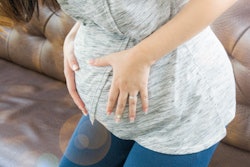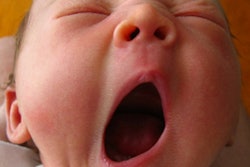
Planes, trains, and automobiles may be annoyances in our everyday lives, but ultrasound shows that such noise pollutants can also affect the embryonic size of fetuses, suggests a study published January 3 in Environment International.
Researchers led by Naomi Graafland from Erasmus University Medical Center in Rotterdam found that exposure to total noise pollution and road traffic during pregnancy are tied to larger embryonic size. However, they also found no associations between noise exposure and fetal growth and birth outcomes via ultrasonography.
"Additionally, our results suggested that exposure to greenness was associated with smaller embryonic size, and that this association was partly mediated by a reduction of noise exposure," Graafland and colleagues wrote.
Previous research suggests there are no significant associations between noise exposure during pregnancy and adverse birth outcomes. However, Graafland and colleagues point out a lack of data exploring noise exposure and its potential effects on embryonic and fetal growth. This includes looking at other environmental exposures such as traffic-related air pollution or natural spaces.
The researchers wanted to add to the literature, looking at data from 7,947 pregnant women with an average age of 28.9 years from the Generation R Study. They estimated noise from road traffic and railway noise at the participants' home addresses during pregnancy using environmental noise maps. In addition, they estimated total noise, which included noise from road traffic, aircraft, railway, and industry. Experienced sonographers carried out ultrasound measurements of embryo size and fetal growth.
Out of the total, 5% of the children were born preterm and 9.4% were born small for gestational age. The average gestational age at birth was 39.9 weeks and the average birth weight was 3,420 grams (7.54 lb).
The median total noise exposure during pregnancy was 55.3 dB, median road traffic noise exposure was 54 dB, and median railway noise exposure was 41 dB. The researchers noted that total noise exposure levels showed strong and moderate correlations with road traffic (0.97) and railway noise exposure (0.21), respectively.
They found significant ties between higher total noise exposure during pregnancy and larger first trimester crown-rump length. This included a standard deviation score of 0.07 per 10 dB increase.
The team also found no significant associations between total noise exposure during pregnancy and fetal weight, length, or head circumference during pregnancy. Additionally, no links were found between total noise exposure during pregnancy and neonatal measures at birth or any adverse birth outcomes.
The study authors also reported that total noise exposure mediated 15% of the ties between exposure to greenness and first trimester crown-rump length. This included a natural indirect effect of -0.01 and total effect of -0.11 for standard deviation scores.
"No association was observed between distance to blue spaces and total noise exposure," the authors wrote. "Also, we found no evidence of an association between total noise or road traffic noise exposure during pregnancy and fetal growth or birth outcomes, nor between railway noise exposure during pregnancy and any of the outcomes."
The team called for future studies to explore the potential effects of noise exposure during pregnancy on altered embryonic growth. This includes looking at other urban environmental exposures, such as traffic-related air pollution and natural spaces.




















